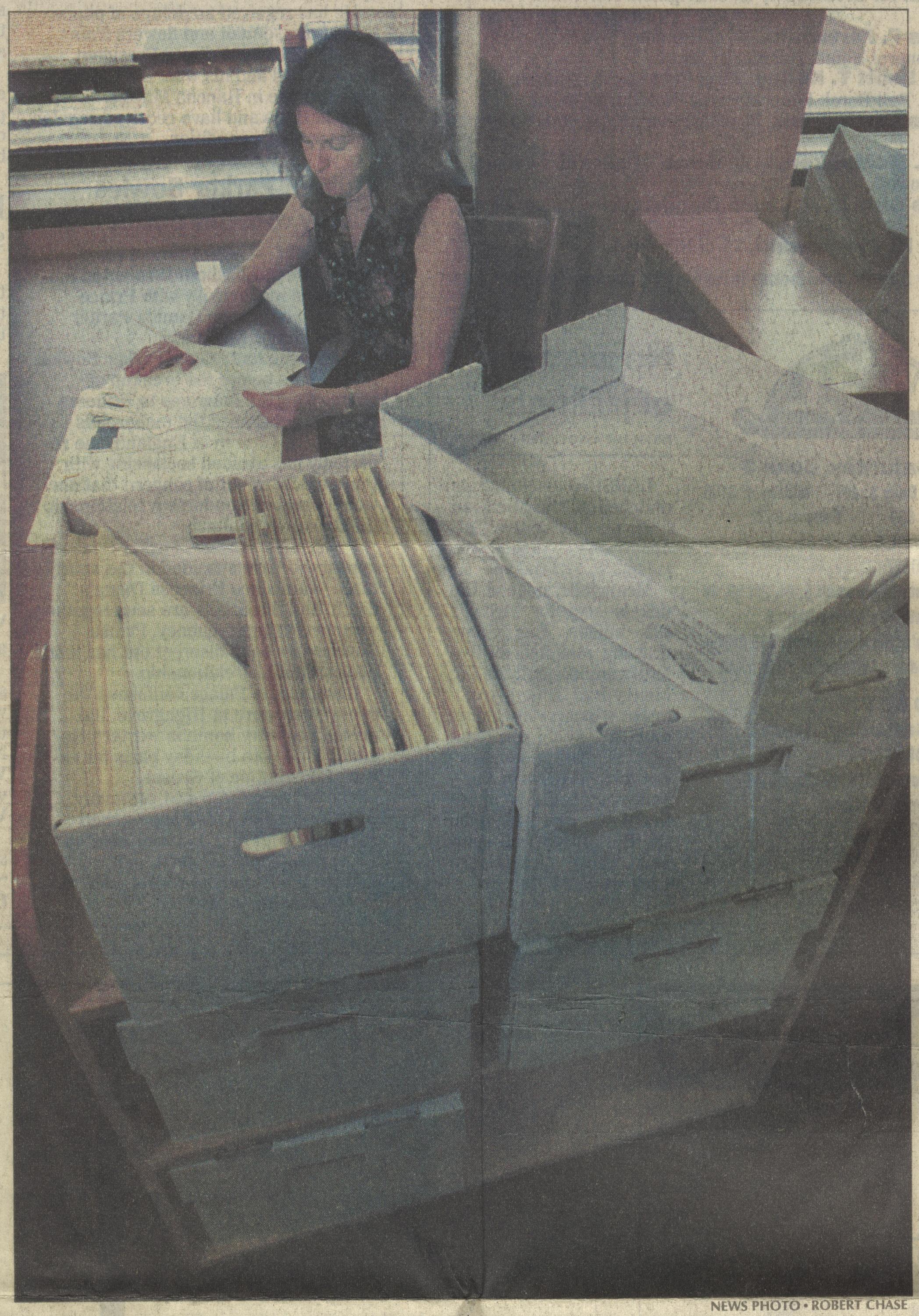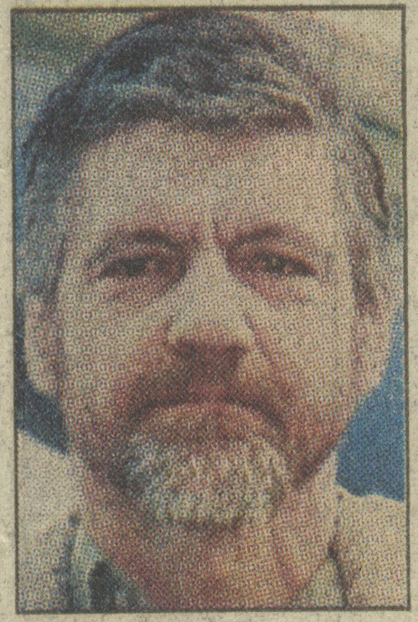Mary Morgan
Kaczynski letters opened; Documents available to public
Accused Unabomber’s writing, correspondence now at U-M

News Photo - Robert Chase

One woman calls him Ted Bear. Others say Ted, or more formally, Mr. Kaczynski.
Some write once, others send a letter every day. One person even asked for a recommendation to Harvard Divinity School — and got it.
Since his arrest in 1996 and subsequent guilty plea in the Unabomber case, Kaczynski has received hundreds of letters, cards, sketches and other items from people around the world.
Now those documents — along with dozens of Kaczynski’s responses — are available to the public for the first time at the University of Michigan.
It’s the most contemporary and controversial part of U- M’s Labadie Collection, one of the world’s top archives of anarchist material.
The collection has been getting shipments of these letters from Kaczynski for about two years. But the material was only made available to the public in the last few weeks. It took that long to negotiate with Kaczynski about how the material would be used, and then to process the documents, said Julie Herrada, curator of the Labadie Collection.
Herrada herself is responsible for this collector’s coup.
She knew the 58-year-old Kaczynski was a prolific writer. Federal prosecutors said he was the author of the Unabomber Manifesto, a treatise arguing that the bombing campaign was necessary to combat a technoindustrial system that robs people of their humanity. It was first published by the Washington Post in 1995, a few months before Kaczynski’s arrest.
Kaczynski is accused of killing three people and injuring 22 others in 16 bombings between 1978 and 1995. A U-M psychologist, James McConnell, and his research assistant were injured when McConnell received one of the bombs in 1985.
In 1998, Kaczynski pleaded guilty to avoid a trial and the insanity defense his attorney planned to use. Sentenced to life in prison, he has asked the court to set aside his guilty plea and is seeking a retrial.
Hoping to secure Kaczynski’s papers for the U-M collection, Herrada first sent a letter to his attorney in early 1997. She waited six months before getting a call. The lawyer said Kaczynski was interested and wanted more information about the library’s motives and plans.
So Herrada wrote another, longer letter explaining why she thought the Labadie Collection would be a good home.
Then, in the fall of 1997, Herrada got a thick manila envelope from Kaczynski himself. “After that we started corresponding directly,” Herrada said. “He kind of opened the gate.”
Kaczynski’s previous link to U-M — he was a graduate student from 1962 to 1967, earning a Ph.D. in mathematics — likely had nothing to do with his decision to give his correspondence to the university, Herrada said. He never mentioned that connection, she said.
The Labadie Collection’s international reputation, along with the relationship Herrada fostered, contributed to Kaczynski’s decision. He also is constrained by space, and can only keep a limited mount of papers in prison, Herrada said.
SEEING THE KACZYNSKI PAPERS
-
To view the Ted Kaczynski papers, you must first make an appointment by contacting the University of Michigan’s Labadie Collection at (734) 764-9377.
-
The collection is part of the Special Collections Library, located in the Hatcher Graduate Library on U-M’s central campus.
In addition to correspondence, the Kaczynski collection includes drafts of briefs kept or edited by Kaczynski. Also in the papers are pamphlets, clippings and other materials mailed to him as well as articles by or about Kaczynski.
U-M did not pay for the material.
Herrada hopes to eventually add other documents to the collection, most notably papers confiscated by the FBI from Kaczynski’s cabin in Montana.
After about a year of correspondence with Kaczynski, Herrada told him that he could call her by her first name. He wrote back, telling her to call him Ted. She has never met or talked with Kaczynski, only corresponded in writing.
“There’s a lot of trust involved, because he’s stuck there (in prison). There’s no out,” said Herrada. “I spent a long time building up that trust, and it’s important for me to keep it.”
Although Kaczynski has been sending packets of papers to Herrada regularly, she didn’t read anything until a final agreement was signed last fall.
The agreement outlined how U-M can use the documents. Certain papers that Kaczynski didn’t want the public to view were returned to him.
“We’re not really a storage facility here,” Herrada said. “We’re archivists.”
When the agreement was signed, Herrada began processing the papers, with the help of a graduate student.
A major decision involved whether to allow the public to see who wrote the letters. Although the library’s mission is to make information accessible to the public, she was concerned because many of the letters are extremely personal. Herrada consulted her colleagues and ultimately decided to block out the names on the photocopies that are being provided to the public, although the original documents will be available to the public in 2049.
I started to have real inner conflicts,” she said, “because these people had no idea what would happen to their letters. Some people still don’t know their letters are open to the public. It was a hard decision, but at least I can sleep at night.”
The photocopied letters are contained in five gray boxes made of acid-free cardboard. In those boxes, papers are filed in pale yellow folders, usually one folder per correspondent. Many folders are thin, because the person sent one or only a few letters. Some contain dozens of letters, though. And about a dozen of the folders contain back-and-forth correspondence between the writer and Kaczynski himself.
The letters come from people who connect with Kaczynski in different ways, says Herrada, who has read through most of the collection. “I think for the most part, people were curious,” she said.
Some identify with Kaczynski on a political level, responding to his radical views on technology, government and corporate power. Others are struck by Kaczynski’s intellect, and discuss their views on philosophy, mathematics and the arts. Some writers are evangelical, hoping to save Kaczynski’s soul.
And many connect on an emotional level, revealing intimate details of their lives to a complete stranger. Some writers seem to suffer from mental illness, and many are from women who hope for a romantic bond.
“I got the sense that a lot of people were very lonely,” Herrada said.
Topics range from the brainy to the banal. People describe grocery shopping, homework, spats with friends and lovers. They talk about their travels, or speculate about what Kaczynski’s life must be like behind bars.
Some chastise Kaczynski for not responding to their missives. Others express support for his battles with the FBI, and detail their own encounters with the government.
In one letter, a correspondent says he’s applying to Harvard Divinitv School, and asks for a recommendation letter. Kaczynski, writing in response, seems surprised by the request.
“Of course I’ll have to tell them that you’re politically incorrect and may possibly let a breath of fresh air into Harvard Divinity School — which would probably suffocate them,” Kaczynski wrote.
The three-page letter of recommendation that Kaczynski wrote also is included in the folder. In it, he describes the man he’s recommending as impetuous, undisciplined and not competent in analytical reasoning.
“I would say the same of most of the philosophers of whose works I have read samples,” Kaczynski adds, “and would probably say it of most of the participants in your Fellows Program.
In another exchange, Kaczynski asks a man to send him a small sketch to use as a Christmas card. The requested image was of Benvenuto Cellini’s sculpture of Perseus hoisting Medusa’s head. The illustration of this Greek myth appealed to Kaczynski in part because Cellini, a cantankerous artist who was twice imprisoned, was a native of Florence, Italy. Kaczynski is a prisoner at the federal penitentiary in Florence, Colo.
Documents continue to arrive, as people continue to correspond with Kaczynski.
“I don’t expect that that is going to end, unless he gets out of jail,” Herrada said. “And I don’t expect that to happen, either.
